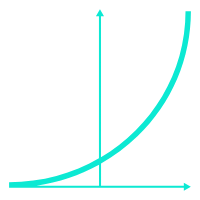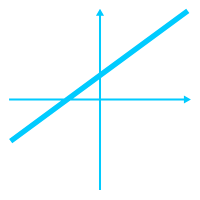Uncover the essentials of functions and relations in this informative blog post. Learn about their definitions, properties, types, and real-world applications. Expand your mathematical knowledge with practical insights into the significance of functions and relations across different disciplines.
Introduction
Functions and relations are fundamental concepts in mathematics that provide insights into the relationships between elements in different sets. This article aims to provide a comprehensive understanding of functions and relations, their properties, and their practical applications. By delving into real-world examples and discussing various types of functions and relations, we will lay a solid foundation for grasping these essential mathematical concepts.

Check Out Our Online Calculators and Tools
Functions and Relations: Definitions and Distinctions
Defining Functions and Relations
Functions are mathematical relationships that assign a unique output value to each input value. In a function, every element from the input set has exactly one corresponding element in the output set. On the other hand, relations establish connections between elements in two sets without any specific requirements for uniqueness or one-to-one correspondence.
Mapping: Connecting Sets
The concept of mapping lies at the core of functions and relations. Mapping involves establishing connections or relationships between elements of one set (the domain) to elements of another set (the codomain). Functions can be seen as a specific type of mapping that satisfies the requirement of assigning a unique output for each input.
Properties of Functions
Domain and Range
The domain of a function represents the set of all possible input values, while the range represents the set of all possible output values. Understanding and determining the domain and range of a function are essential for analyzing its behavior and solving problems.
One-to-One and Onto Functions
A one-to-one (injective) function is a type of function where each input value corresponds to a unique output value. In other words, no two distinct input values produce the same output value. An onto (surjective) function, on the other hand, is a function where every element in the codomain has at least one corresponding element in the domain. In onto functions, the entire range is covered by the function.
Try Out Various Math Calculators
Types of Functions
Linear Functions
Linear functions have a constant rate of change and can be represented by a straight line on a graph. They have the form f(x) = mx + b, where m represents the slope and b represents the y-intercept.
Example: The function f(x) = 2x + 3 is a linear function with a slope of 2 and a y-intercept of 3.
Quadratic Functions
Quadratic functions involve variables raised to the power of 2. They have the general form f(x) = ax^2 + bx + c, where a, b, and c are constants. Quadratic functions often produce a U-shaped curve known as a parabola.
Example: The function f(x) = x^2 – 4x + 3 is a quadratic function that forms a parabola opening upwards.
Exponential Functions
Exponential functions involve a constant base raised to a variable exponent. They have the form f(x) = a^x, where a is a positive constant. Exponential functions often exhibit rapid growth or decay.
Example: The function f(x) = 2^x represents exponential growth, where the output value doubles for each unit increase in the input value.
Trigonometric Functions
Trigonometric functions are related to angles and are commonly used in geometry and physics. They include functions such as sine (sin), cosine (cos), and tangent (tan).
Example: The function f(x) = sin(x) represents the sine function, which oscillates between -1 and 1 as the input value varies.

Practical Applications of Functions and Relations
Economics and Finance
Functions and relations find practical applications in various economic and financial contexts, such as analyzing supply and demand curves, modeling investment growth, and predicting market trends.
Physics and Engineering
Functions and relations are vital in physics and engineering to describe physical phenomena, model motion, analyze electrical circuits, and understand complex systems.
Computer Science and Data Analysis
Functions and relations are fundamental in computer science and data analysis for tasks such as algorithm design, data manipulation, and pattern recognition.
Biology and Medicine
Functions and relations are used in biology and medicine to model population growth, analyze physiological processes, and understand the relationships between variables in medical research.
Fraction to Decimal Calculator
Summary
Functions and relations are essential mathematical concepts that allow us to describe and understand the relationships between elements in different sets. By understanding the definitions, properties, and types of functions, as well as their practical applications, we can gain a deeper appreciation for their significance in various fields. Whether in the realms of mathematics, science, or everyday life, functions and relations play a crucial role in analyzing and interpreting the world around us.
